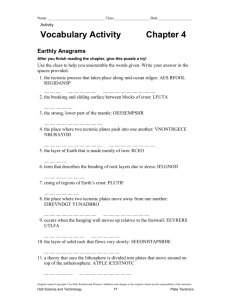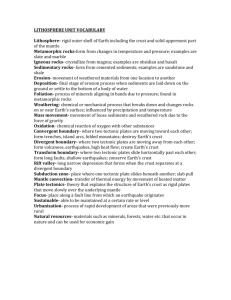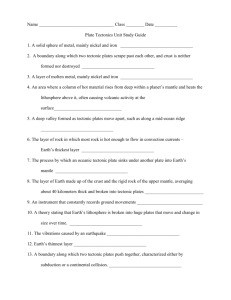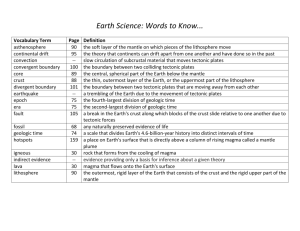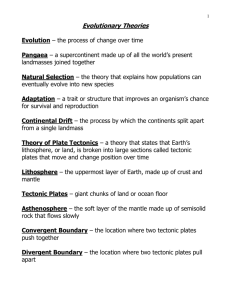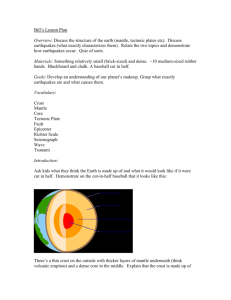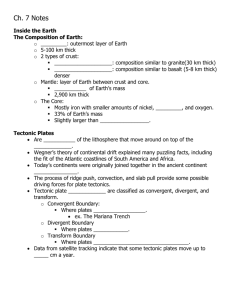Environmental Science Chapter 3 Section 1
advertisement
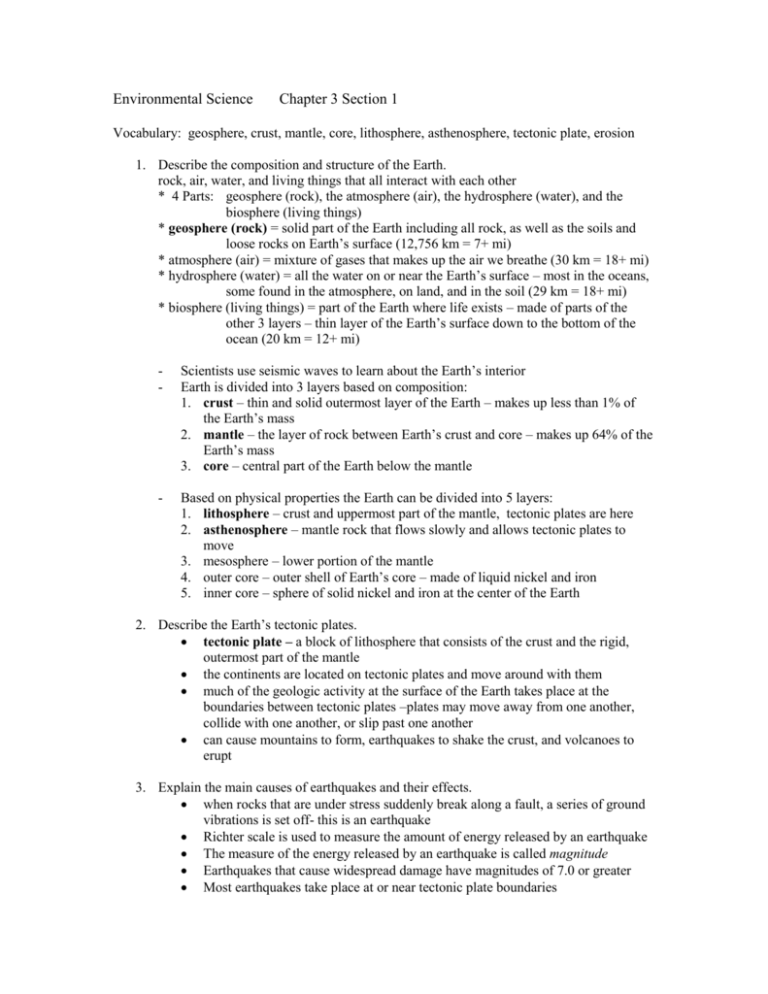
Environmental Science Chapter 3 Section 1 Vocabulary: geosphere, crust, mantle, core, lithosphere, asthenosphere, tectonic plate, erosion 1. Describe the composition and structure of the Earth. rock, air, water, and living things that all interact with each other * 4 Parts: geosphere (rock), the atmosphere (air), the hydrosphere (water), and the biosphere (living things) * geosphere (rock) = solid part of the Earth including all rock, as well as the soils and loose rocks on Earth’s surface (12,756 km = 7+ mi) * atmosphere (air) = mixture of gases that makes up the air we breathe (30 km = 18+ mi) * hydrosphere (water) = all the water on or near the Earth’s surface – most in the oceans, some found in the atmosphere, on land, and in the soil (29 km = 18+ mi) * biosphere (living things) = part of the Earth where life exists – made of parts of the other 3 layers – thin layer of the Earth’s surface down to the bottom of the ocean (20 km = 12+ mi) - Scientists use seismic waves to learn about the Earth’s interior Earth is divided into 3 layers based on composition: 1. crust – thin and solid outermost layer of the Earth – makes up less than 1% of the Earth’s mass 2. mantle – the layer of rock between Earth’s crust and core – makes up 64% of the Earth’s mass 3. core – central part of the Earth below the mantle - Based on physical properties the Earth can be divided into 5 layers: 1. lithosphere – crust and uppermost part of the mantle, tectonic plates are here 2. asthenosphere – mantle rock that flows slowly and allows tectonic plates to move 3. mesosphere – lower portion of the mantle 4. outer core – outer shell of Earth’s core – made of liquid nickel and iron 5. inner core – sphere of solid nickel and iron at the center of the Earth 2. Describe the Earth’s tectonic plates. tectonic plate – a block of lithosphere that consists of the crust and the rigid, outermost part of the mantle the continents are located on tectonic plates and move around with them much of the geologic activity at the surface of the Earth takes place at the boundaries between tectonic plates –plates may move away from one another, collide with one another, or slip past one another can cause mountains to form, earthquakes to shake the crust, and volcanoes to erupt 3. Explain the main causes of earthquakes and their effects. when rocks that are under stress suddenly break along a fault, a series of ground vibrations is set off- this is an earthquake Richter scale is used to measure the amount of energy released by an earthquake The measure of the energy released by an earthquake is called magnitude Earthquakes that cause widespread damage have magnitudes of 7.0 or greater Most earthquakes take place at or near tectonic plate boundaries 4. Identify the relationship between volcanic eruptions and climate change. - volcanoes are mountains built from magma that rise from the Earth’s interior to its surface - often located near tectonic plate boundaries - Ring of Fire (Pacific Ocean) – contains 75% of the world’s active volcanoes that are on land - Clouds of volcanic ash and sulfur-rich gases may reach the upper atmosphere – this may reduce the amount of sunlight that reaches the Earth’s surface – this reduction can cause a drop in the average global surface temperature 5. Describe how wind and water alter the Earth’s surface. wind and water move rocks around and change their appearance erosion occurs – the removal and transport of surface material – wears down rocks and makes them smoother as time passes wind can blow soil away very quickly and erode soft rock waves can erode coastlines and rivers can carve deep gorges
